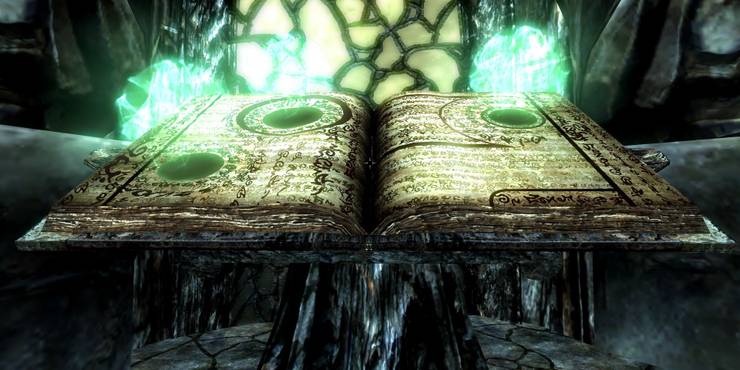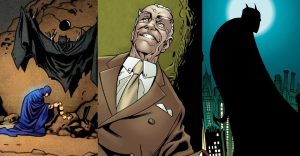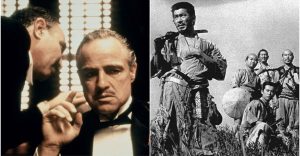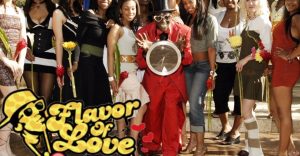All 337 Skyrim Books Explained: What Elder Scrolls Literature is About

For a long-running fantasy RPG franchise named after a compendium of knowledge, it’s fitting that The Elder Scrolls V: Skyrim and other games in the Elder Scrolls series are filled to the brim with books players can collect, catalogue, and read for themselves. Those who wish to learn more about these storied annals should read further through this article, which categorizes the many work of literature in Skyrim, ranging from in-game historical works and instructional manuals to novels, fables, and, of course, tales of Lusty Argonian Maids.
A brief aside about the namesake of Bethesda’s bestselling RPG series: The first installment of this franchise was named The Elder Scrolls: Arena purely because developers thought the phrase “Elder Scrolls” sounded cool and mystical. A concept like this was too good to waste, though, so subsequent games in the Elder Scrolls series clarified just what Elder Scrolls actually were – fragments of creation from the dawn of time, divine insights that took the form of prophetic scrolls to human eyes. The Empire of Cyrodiil, the dominant faction in the Elder Scrolls games, maintained their power in part through the use of Elder Scrolls, collected by reclusive Moth Priests and stored in their Imperial Library.
Fittingly enough, the many in-game books seen in Elder Scrolls titles throughout the years can be found in the Imperial Library website – including all 337 books available for reading in the Elder Scrolls V: Skyrim. Over the course of different playthroughs, players can discover a number of books scattered through the open-world environment of Skyrim, store them on bookshelves for future perusal, or browse rare books in places such as the archives at the Mage’s College at Winterhold or the demonic realms of Apocrypha. Roughly speaking, the various books in Skyrim can be classified according to the following categories:
Skyrim Book Category #1: Skill-Training Books

A number of the books in Skyrim aren’t just entertaining, but also educational for the Dragonborn protagonist who reads them. The mere act of cracking open these books lets a player increase an appropriate skill rating by 1, while the books themselves contain parable, fables, and anecdotes related to the skill in question. Some notable examples of skill books include:
–A Game at Dinner, a dark first-person narration from the perspective of a spy sent to infiltrate the court of a Prince from Morrowind. During a banquet, the Prince announces he has poisoned the dining utensils of a traitorous dinner guest, then presents a bowl full what he claimed to be the antidote. A party guest (not the spy) loses their composure and drinks the so-called antidote, which turns out to be the true vector for the poison. This book levels up Alchemy.
–The Black Arrow Volumes 1 and 2 both revolve around an old archer who lives in the forests of Valenwood, practicing their craft and taking on the occasional student. When a harsh Duchess threatens the well-being of his town, the archer slays her in an incredible feat of archery, sending a precisely aimed arrow flying right through the keyhole of a door. The first Volume increases Acrobatics in Morrowind and Oblivion, while Volume II increases Archery in Morrowind, Oblivion, and Skyrim.
Skyrim Book Category #2: Wordbuilding

The various historical texts, biographies, and scholarly treatises in Skyrim describes the world of the Elder Scrolls games for players, giving them extra insight into the cultures of the nations, races, and heroes who make up the continent of Tamriel. Besides adding color to the setting and making it feel more lived in, these lore books also let developers at Bethesda tell players about lands and peoples that don’t appear in Skyrim – the carnivorous wood elves of Valenwood, for instance, or the rainforests of Black Marsh, home to the Argonian lizardfolk. To learn about the history of Skyrim itself, players can consult these volumes:
–The Songs of The Return volumes relate stories of the mythical founders of Nord civilization. In the eight volumes available within Skyrim, Ysgramor and his Five Hundred Companions sail from the doomed land of Atmora, war against the elves in Skyrim, and found the cities of Whiterun and Windheim. Reading these books will grant players insight into the local Nord culture of the game (as well as why so many NPCs swear by Ysgramor’s name).
–The Red Year volumes 1 and 2 describe the disaster that befell the Dunmer civilization in the imperial province of Morrowind several centuries after the events of the Elder Scrolls III: Morrowind. Through first-person accounts of survivors of this disaster, readers learn about the giant asteroid which struck Vivec City and triggered the eruption of the nearby Red Mountain. The dust and embers scattered by the disaster trigger an exodus of Dark Elf refugees, some of whom settle in Skyrim or the neighboring island of Solstheim.
Skyrim Book Category #3: In-Game Fiction (With Lots of Daedra)

For every fictional historical text in Skyrim, there’s a fictional work of fiction, ranging from multi-volume sagas and stage plays such as:
–The Lusty Argonian Maid Volume 1 and 2, a stage play that parodies works of erotic fiction. The titular Argonian Maid, a reptilian domestic worker named “Lifts Her Tail,” is asked by her employer, Crantius Colto, to polish his spear and knead the dough for his loaf of bread. The spear and the loaf of bread are probably metaphors for something else.
–The Red Book of Riddles and Yellow Book of Riddles are both compendiums of, well, riddles. Each books has a list of conundrums for readers to solve, with the answers to each printed upside down. An excerpt of one of these riddles: “A metal neither black nor red/As heavy as man’s golden greed/What you do to stay ahead/With friend or arrow or steed.”
Many of the fictional books in Skyrim also feature cautionary folk tales and “just-so” stories featuring the Daedra, a race of demonic beings and godlike entities that love toying with the lives of the Men and Mer who live in Tamriel. For instance:
–Azura and the Box, part of a larger series of books that describe the culture and technology of the long-extinct Dwemer (Dwarven) race, is a parable of sorts about the tension between reason and faith. An old, agnostic Dwemer scientist summons Azura, the Daedric Prince of Dusk and Dawn, and asks her to prove divinity by predicting what’s inside a closed box. Azura predicts there’s a flower in the box. The scientist uses sleight of hand to empty the box of its flower before opening it. Enraged at his trickery, Azura curses the Dwemer scientist dead.
–Myths of Sheogorath tells tales about Sheogorath, the Daedric Prince of Madness and Creativity, famous throughout the Elder Scrolls games for his love of trickery and his memetic obsession with cheese. In the first tale, he invents music by dissecting a human bystander and making musical instruments from their body parts. In the second, he inflicts an ironic punishment on a king who tries to ban art, music, and dancing in his kingdom. In the third, Sheogorath threatens to drive a Wizard insane, then steps back and lets the wizard’s innate sense of paranoia do the job for him.
Skyrim Book Category #4: Surreal Post-Modern Religious Scripture (Written By Michael Kirkbriede)

The creation myths and religious texts in Skyrim, Morrowind, and other Elder Scrolls games owe a lot to writer Michael Kirkbriede, who took a previously standard fantasy setting and infused it with vividly surreal details and philosophical musing on the nature of dreams, reality, divinity, and characters achieving enlightenment by realizing they’re in a video game. Nowhere is this more apparent than in the books on mythology and religion seen in Skyrim, including, but not limited to:
–The Monomyth, a scholarly treatise that compares the different versions of the Elder Scrolls creation myth, in which a deity named Lorkhan convinces the other gods to create/dream/become the Mundus, aka the material world. This creation myth is interpreted differently in human and elvish cultures. Human cultures see the creation of the material world as a positive development which introduced change to a static world., while Elvish cultures generally see the creation of the world as a curse that stripped them of their long-lost divinity.
–The Battle of Red Mountain, a book dictated to a dissident priest by Vivec, a member of the Tribunal of mortal-turned-gods that ruled Morrowind in ages past. Vivec explains to the dissident how he and his fellow god-rulers ascended into divinity by tapping into the Heart of Lorkhan, a fossilized god-organ buried within the volcanic Red Mountain. With their Godhood, they brought prosperity to the Dunmer Elves of Morrowind, but the king they betrayed to achieve their divinity is destined to reincarnate and bring their rule to an end (said king being the player character in The Elder Scrolls III: Morrowind).
All of the 337 books in The Elder Scrolls V: Skyrim can fit into one of these categories, but the ones mentioned above are definitely worth checking out of the library.
Source: The Imperial Library
About The Author

















